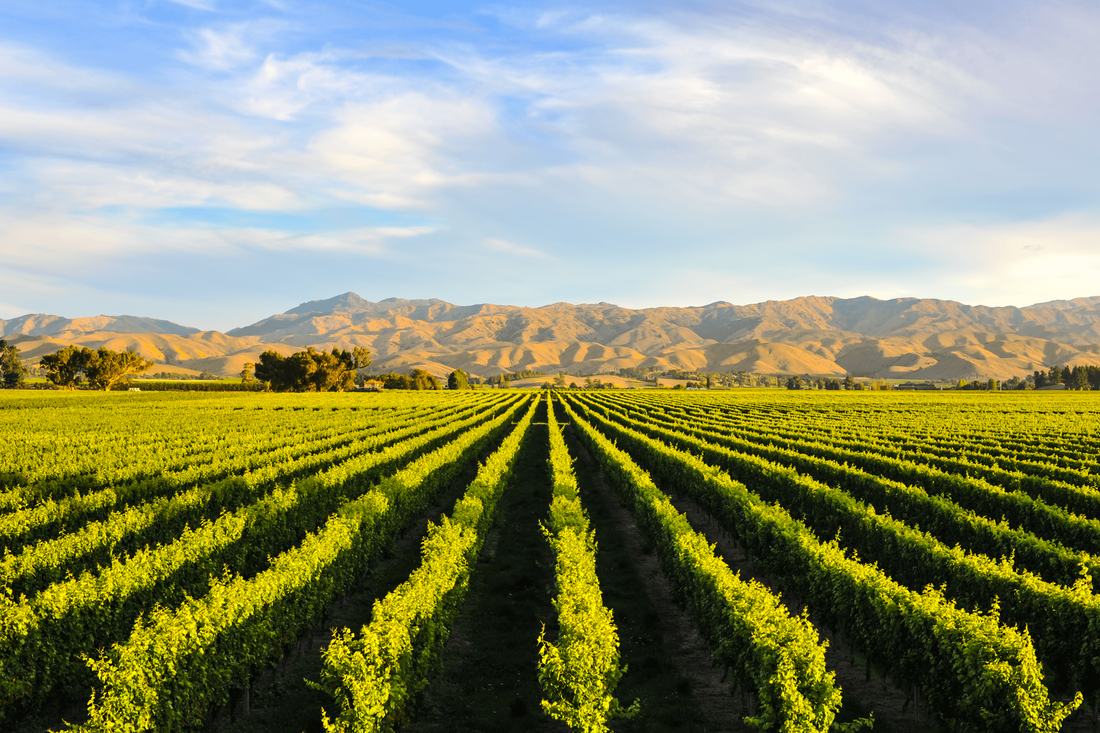
What you should know about New Zealand wines
Share
History of grape growing
The Anglican missionary Samuel Marsden planted the first vines in 1819 . The first official winemaker to bottle the first wines was the Scotsman James Busby , who also became the first British resident of New Zealand in 1840. During the 19th century, attempts were made to continue and expand the vineyards by French priests and peasants, Croatian gold prospectors and pastoralists from Hawke's Bay. But unfortunately the vine was attacked by various diseases that destroyed it and together with prohibition fanatics contributed to the decline of the wine industry.
It is only from the 1920s and 1930s that a gradual growth can be noted, which flourished during the Second World War. The relaxation of legislation regarding the sale of alcohol in the 1960s and 1970s attracted investors from America and Australia who helped to improve the quality of wine produced, with an emphasis on light, fruity and slightly sweet white wines.
Wine regions
New Zealand is divided into 11 wine regions, located on both the North and South Islands. There are 6 regions in the North Island - Northland , Auckland , Waikato/Bay of Plenty , Gisborne , Hawke's Bay and Wairarapa .
There are a total of 315 wineries (data from 2019) and their area covers approximately 7,656 hectares .
In contrast, the South Island has 5 wine regions , the largest of which include Marlborough, Nelson, North Canterbury, Central Otago and the Waitaki Valley. There are 403 wineries operating here (data from 2019) and an area of 32,268 hectares of vineyards is farmed.
In terms of area, the South Island is more important. It is also home to Marlborough's largest wine region, with 27,808 hectares of vineyards and 150 wineries.

Varieties that put New Zealand on the map of the wine countries of the world
New Zealand produces around 1% of the world's wine production annually and ranked 15th in global wine production with 413,000 tonnes in 2019 . The largest buyers are the United States, Great Britain and Australia. And which varieties are grown in New Zealand?
First of all, it is Sauvignon Blanc, which is associated with adjectives such as unique, lush and intense. In 1975, when the first Sauvignon Blanc vineyards were planted in Marlborough, no one could have predicted the fame this variety would achieve in a few decades.
Sauvignon Blanc began to be produced commercially in the 1970s and is now New Zealand's most widely grown variety. Climate is the main factor that defines regional styles.
Northern wine regions (Hawke's Bay, Gisborne) have warmer and milder growing conditions resulting in a riper and richer style of Sauvignon Blanc with flavors of melon, nectarine and other stone fruit.
Southern regions (Nelson, Marlborough) on the other hand have longer and cooler conditions which promote stronger and livelier fruit flavors and have higher levels of acidity. As a result, the resulting wines are sharper with flavors of passion fruit and other tropical fruits, red pepper or gooseberry.
Of the white varieties , Chardonnay, Pinot Gris (Rulandské gris in Czech) or Riesling are still grown in Zealand.
Pinot noir (Czech pinot noir) is the most widespread Burgundy variety grown in New Zealand. It is grown mainly in the cooler southern areas of the island (Wairarapa, Marlborough, Nelson, North Canterbury and Central Otago). The common element of Pinot Noir from different regions is the structure and elegance of wines with strong fruit intensity. Among the red varieties in Zealand, we can also find Merlot and Cabernet Sauvignon or Syrah.
Take a look at the range of New Zealand wines that we offer in our e-shop.

Terroir or what is reflected in the character of the wine
The term "terroir" comes from French and means "earth". In winemaking, this term is used to describe the environment that influences the character of the wine. It therefore includes the uniqueness of the environment (climatic conditions), the agricultural practices of the winemaker and the specificity of the soil in which the vines are grown.
There are eleven main wine regions in New Zealand, each showing great diversity in climate and terrain. All wine regions are no more than 130 km from the sea. The proximity of the vineyards to the ocean has a significant influence on the character of New Zealand wines. Mild, sunny summers and significant differences between day and night temperatures slow the ripening of the grapes, allowing the development of pure and intense varietal flavors. This is the basis of the strength of New Zealand wines, which lends them elegance, structure and complements any meal.
